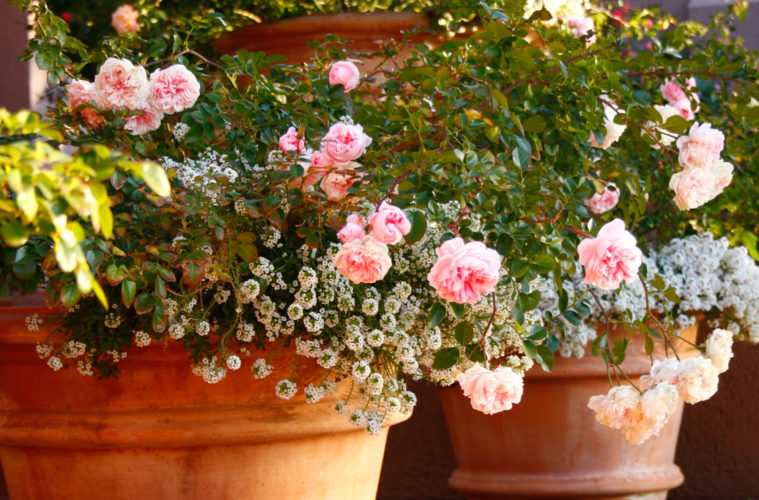Growing roses in containers is becoming more and more popular. We asked rose experts Sheenagh Harris, former president of the World Federation of Rose Societies, and Ludwig Taschner, of Ludwig’s Roses, how to get the best results
WHY GROW ROSES IN CONTAINERS?
Sheenagh: Roses in containers look fabulous when used to decorate a patio, a balcony, courtyard or driveway. It’s easy to move them to a sheltered position in extreme weather and out of the way if they are not looking attractive.
Ludwig: Containers are ideal where there’s root competition in beds from trees or in areas with very sandy soil. They can either be a feature in a bed, or planted in plastic pots and sunk into the soil.
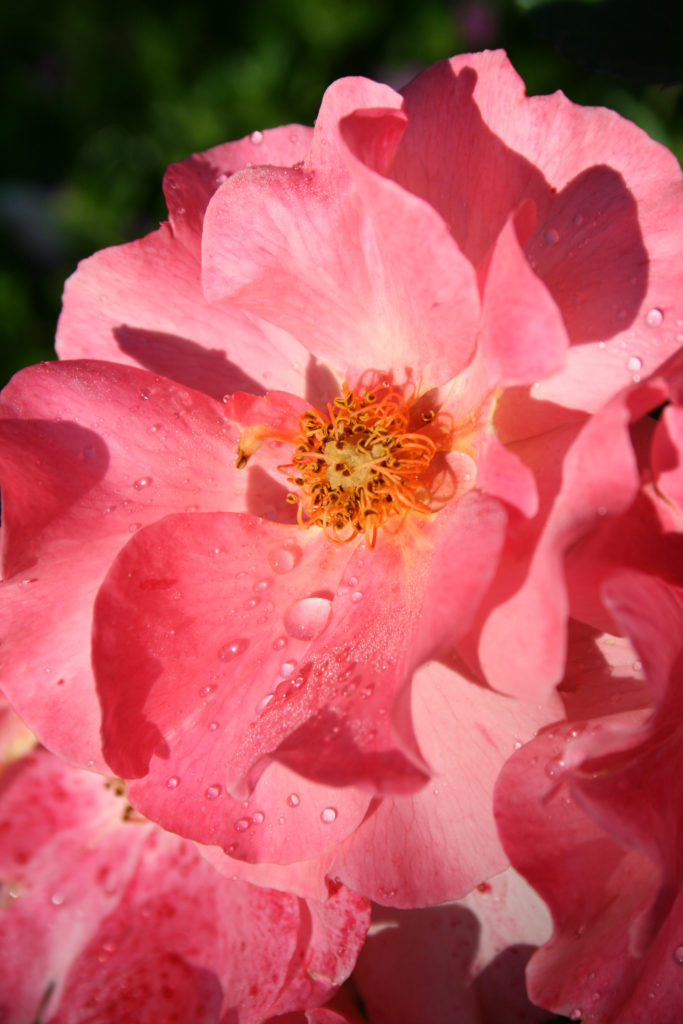
“Gnome World”
WHICH ROSES CAN BE GROWN IN CONTAINERS?
Ludwig: Any type of rose can be grown in a container. However, it is best to select varieties with a growth habit suitable for the shape of the container. For example, a shrub rose suits a large, wide pot, while a climbing rose looks elegant emerging from a tall, slender pot.
READ MORE: Container gardening with succulents
CAN YOU PLANT MORE THAN ONE TYPE OF ROSE IN EACH CONTAINER?
Sheenagh: Yes, as long as the container is big enough. My favourite combination is ‘My Granny’, ‘Granny Dearest’ and ‘Granny’s Delight’, preferably in a half wine barrel with a standard variety of one kind in the centre.
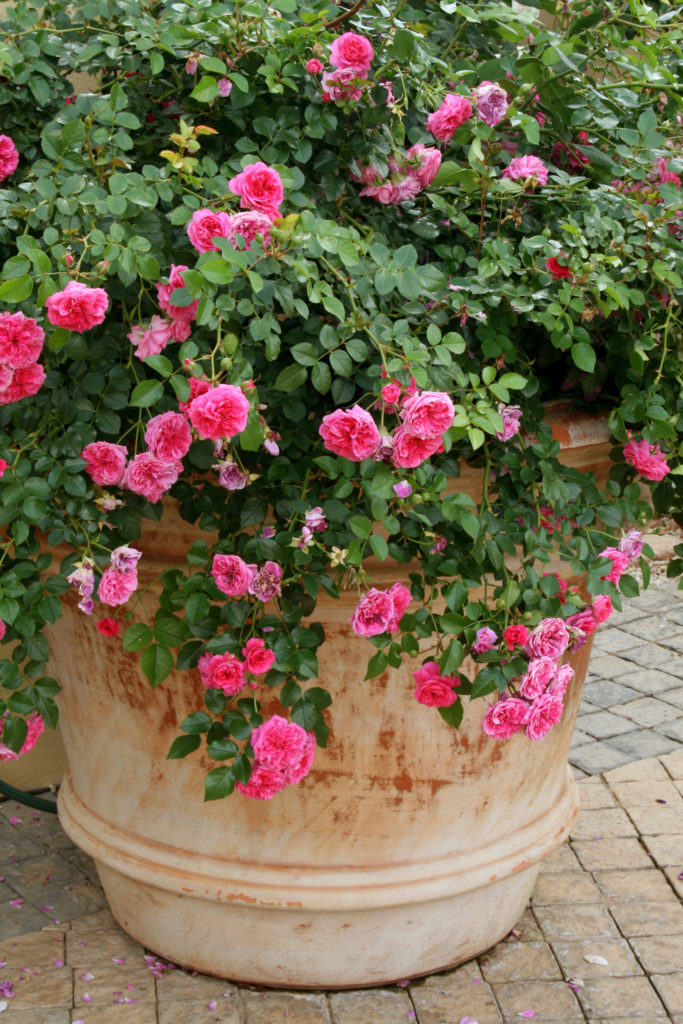
Granny’s Delight
Ludwig: Grow a tall, upright type, such as ‘South Africa’, at the back and an arching variety in front, such as ‘Deloitte & Touche’. Or try a standard in the centre, such as ‘Iceberg’ and three shorter bush types, such as ‘Tawny Profusion’, around it.
READ MORE: 10 Roses we love
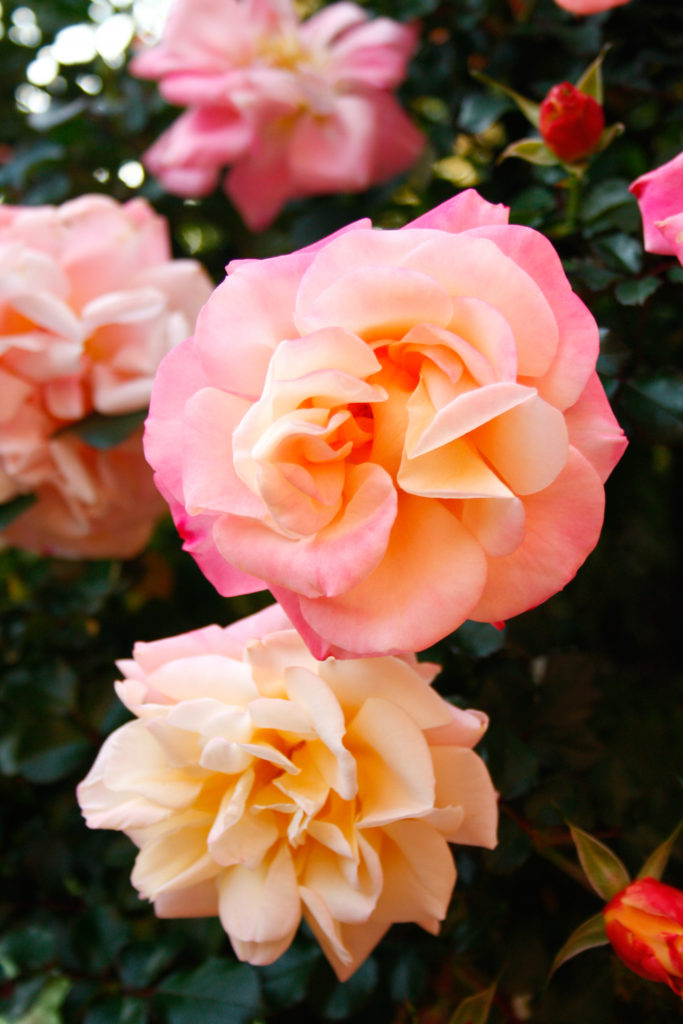
Deloitte & Touche
WHAT SIZE AND TYPE OF CONTAINER IS BEST?
Sheenagh: The larger the pot, the happier the rose. A half wine barrel or large urn is a good example of the depth. Wood and terracotta are the best choice. Metal gets very hot and dries out the soil quickly and plastic can become brittle and crack in the sun.
Ludwig: Miniature roses will do well in a 5–10 litre container, but for most other roses, you’ll need a larger container, between 30–50 litres. So, if you want to plant two roses together, use a 60-litre container.
READ MORE: Container gardening: Potting water lilies
WHERE SHOULD I POSITION MY CONTAINER?
Sheenagh: Choose a place where your container will receive a minimum of six hours of sun a day. Pots of roses make a statement at the end of walkways; tall pots are effective on either side of a doorway or entrance; and shallower pots bring personality to the edge of a retaining wall, allowing rambling roses to hang down.
WHAT SOIL IS REQUIRED?
Ludwig: Permanent aeration is the key. Potting soil sold at garden centres is often not sufficiently coarse or rich enough for roses. It’s best to add coarse organic material, such as bark mulch, peanut shells or gravel. Just five percent clay mixed in well does wonders for the soil’s water-holding capacity, but any more will destroy aeration. Avoid using too much compost as it decomposes quickly and settles to a low level, destroying aeration in the process. Raise the upper level of soil slightly over the edge of the container. Within a month it will have sunk to the ideal level.
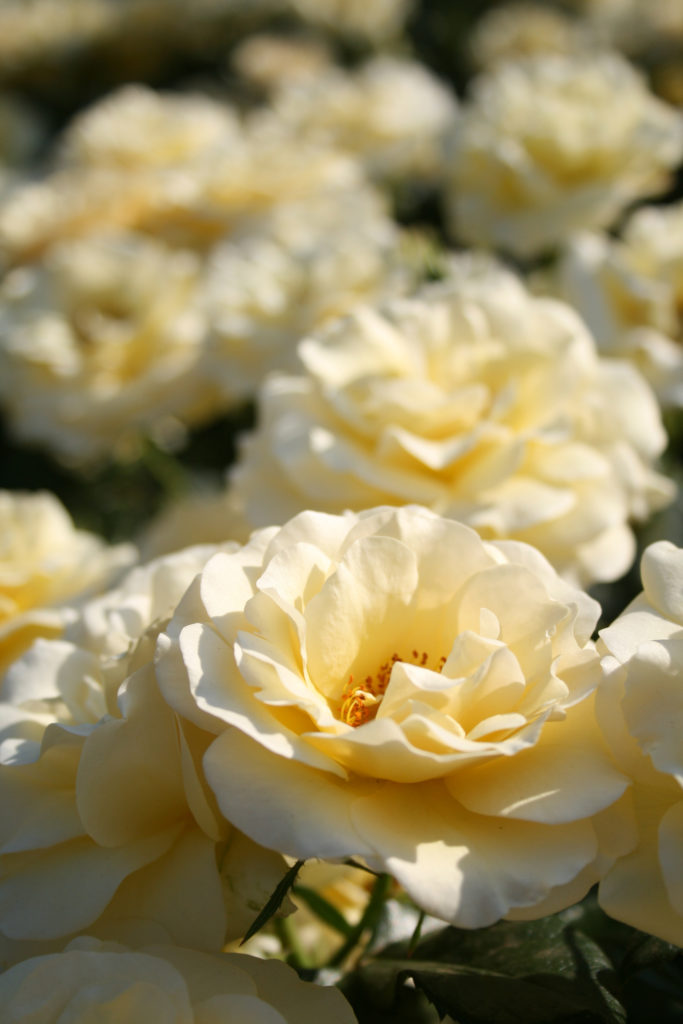
Tawny Profusion
HOW DO I SUPPORT CLIMBING ROSES?
Ludwig: A climbing rose grows quite big and will eventually have a lot of foliage and flowers to support. Ensure the container has a holding capacity of at least 40–60 litres. Place a stake into the soil to support the climbing canes, or place the container next to a pole, fence or wall with a trellis attached.
WILL MY ROSE NEED TO BE REPOTTED?
Sheenagh: There is no limit to the length of time a rose can be kept in a container, provided the soil is renewed regularly every year. Remove as much soil as possible from around the roots at pruning time and replace with rich, new compost. If the rose requires repotting, prune hard and keep the plant damp while renewing the soil and then replant immediately.
HOW DO I CARE FOR MY POTTED ROSE?
Ludwig: Water container roses well every day. However, ensure the roots don’t stand in water as they will rot within hours. Once established, fertilise on a monthly basis from August to April with a quick-reacting granular fertiliser, such as Vigorosa or Wonder Rose. Apply a heaped teaspoon per plant for every 30 litres of potting soil, or for miniature roses in smaller pots, a level teaspoon per 10 litres of potting soil. In winter, apply a few handfuls of manure or rich compost to the soil surface for long-lasting nutrition. Trim and shape regularly during the year, taking care to retain enough leaves. Prune in winter as you would the roses growing in the garden.
WHAT PESTS AND DISEASES SHOULD I GUARD AGAINST?
Sheenagh: Roses in pots are very susceptible to red spider mite. Avoid placing them against a wall and don’t allow them to dry out as this encourages the pest.
Ludwig: If potted roses are plagued by diseases and insects, it means they are not receiving enough water. If the water content in the leaves is low, powdery mildew, red spider mite and pernicious scale may appear. Drenching with an insecticide containing imidacloprid (Koinor, Merit, Confidor) keeps most insects away from roses for about six months. Control fungal diseases by spraying monthly with Chronos or Rose Protector. Ludwig’s Insect Spray is organically certified. A tablespoon of sodium bicarbonate added to a 10 litre solution of ready-mixed spray provides a good control of insects and a fair control of fungal diseases.
KEEP READING: Growing your own pesticides

